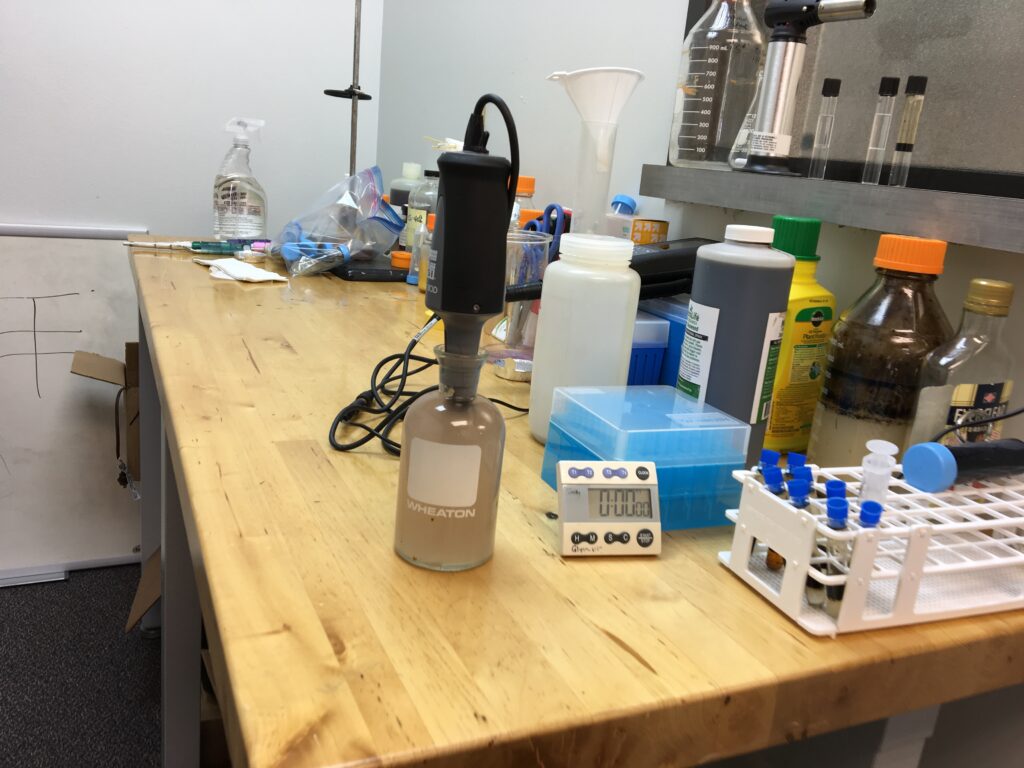
Dissolved Oxygen Uptake Rate (DOUR) and Specific Oxygen Uptake Rate (SOUR) are often used to monitor biological system health on a daily basis. When used frequently, oxygen uptake rates show changes in bacteria growth/respiration rates. I have included the protocol in the at the end of this post, but I wanted to discuss what OUR monitors and what various changes mean to daily operations.
What Oxygen Uptake Rate tests monitor
The DO meter reads oxygen changes in a saturated sample over a set period of time. The changes in dissolved oxygen are primarily due to the use of oxygen by microbes in the sample. (Chemicals can exert some demand, but in most biological units the change is due to microbes.)
If the microbes are dividing and growing rapidly (log phase growth), the DOUR will be high. A system with a sudden increase in OUR indicates more soluble organics (BOD) which can impact effluent BOD, nitrification, and TSS.
Following a spill with more toxic influents, the OUR can suddenly drop which indicates the biomass is actually not reproducing and/or in the lag phase where growth is low or stopped. We also see low OUR when the influent loadings are reduced (low influent BOD) – as seen during process unit shutdown.
By doing OUR tests on a daily basis, we are collecting baseline data that ties oxygen uptake to other parameters including effluent BOD/COD, nutrient removal, TSS removal, and effluent toxicity. When operators see OUR numbers outside normal ranges, they can immediately begin to search for causes and begin protocols to protect effluent quality.
